4 Things About Bananas That Will Make You Feel a Whole Bunch Smarter!
Topics for Search Engine Surprise articles are selected using Google’s “I’m Feeling Curious” feature. This week’s random result was “What do bananas grow on?”
Bananas are the MVP of the fruit world. The average American eats 26 pounds (12 kilograms) per year, which is only a fraction of the 100 billion bananas consumed worldwide. Whether you slice them over cereal, blend them into a smoothie, or bake them in a muffin, odds are you’ll eat a banana sometime in the next several days.
Fictional characters are fond of bananas too. The lovable minions from Despicable Me sing their praises and hawk them in commercials. Donkey Kong keeps a bounty of bananas in his cave, and Ms. Pac-Man gobbles them up to earn bonus points. These fabled fruits even grant Bananaman his superpowers.
Despite the popularity of bananas, few people are familiar with their unusual life history. Hope you’re ready learn a whole bunch about banana biology!
Banana Berries
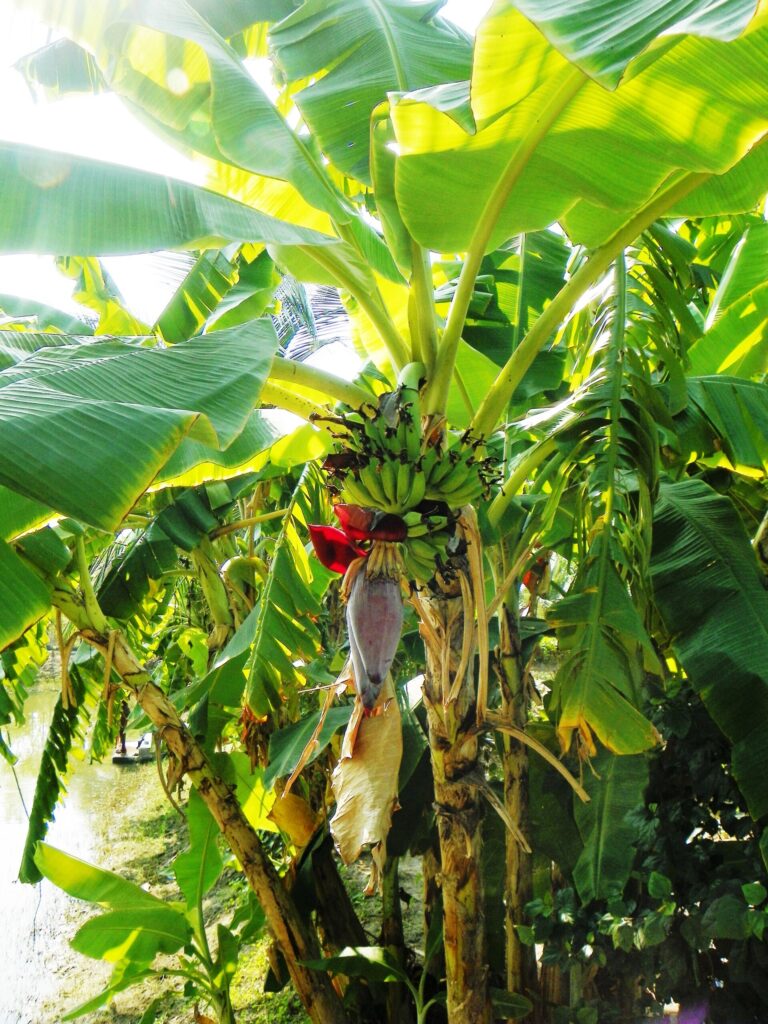
You might be surprised to learn that bananas are a type of berry, and they don’t grow on trees. Despite reaching a height of nearly 11.5 feet (3.5 meters), banana trees aren’t trees at all. Instead, they are the world’s largest flowering herb and a distant relative of ginger.
The non-woody “trunks” of the banana plant are actually pseudostems, which are composed of tightly wound sheaths of overlapping leaves that unfurl as the tree grows. The true stem of the plant – called a rhizome – lives underground. As the tree matures, a flower stalk emerges from the rhizome and grows through the center of the pseudostem.
The stalk carries numerous yellowish flowers protected by large purple-red modified leaves called bracts, which eventually develop into the individual banana fruits, called fingers. A grouping of attached fingers is called a hand, and multiple hands that grow in a cluster around the stalk are called a bunch. It takes about nine months to grow a complete bunch of 50 to 170 bananas. The above ground portion of the banana plant dies after producing fruit, and a lateral shoot, called a sucker, grows out from the rhizome and develops into another plant.
Archaeological evidence suggests bananas were domesticated in the Papua New Guinea area about 7,000 years ago. Today, they are grown in more than 150 countries, and there are nearly 1,000 different wild and domesticated varieties. Most wild bananas are chockfull of hard seeds, making them inedible. The sweet-tasting Cavendish variety found in U.S. grocery stores is considered a dessert banana, whereas many other cultivated varieties are similar to plantains and must be cooked before eating.
It’s Not Easy Being Green

Maybe you’ve heard that you can ripen an avocado by placing it in a paper bag with a ripe banana? That’s because mature bananas release ethylene, an important plant hormone responsible for the ripening process.
In bananas and many other fruits, production of ethylene surges when the fruit is ready to ripen. This surge of hormones transforms the hard, green fruit into a tender, sweet treat by breaking down the starch and increasing the amount of simple sugars. Ethylene is also a stress hormone that initiates decay in old or damaged leaves. In a sense, fruit ripening is the start of the decaying process, which isn’t surprising if you’ve ever discovered a black banana in the bottom of your forgotten lunch bag.
Ethylene production is regulated by developmental and environmental factors. When genes controlling ethylene production are activated, they trigger the production of various enzymes involved in the ripening process. For instance, pectinases break down cell walls and soften the fruit, while amylases convert the starch into simple sugars that sweeten the taste. Hydrolases degrade the chlorophyll content in the green peels, giving them a more pleasing yellow hue.
Growers often harvest bananas when green and ship them in refrigerated containers to prevent the fruit from ripening too quickly. Later, they pump ethylene into the storage warehouses to begin the ripening process before delivering the fruit to the store.
Although bananas may appear to hasten the ripening of other fruit, they only produce moderate levels of ethylene. Some fruits, such as apples, pears, and melons, are especially sensitive to the hormone, and it has a powerful effect on their ripening process. So, if you’re in a rush to make guacamole, go ahead and toss that avocado in a bag with a ripe banana. It might not help, but it can’t hurt.
Attack of the Clones
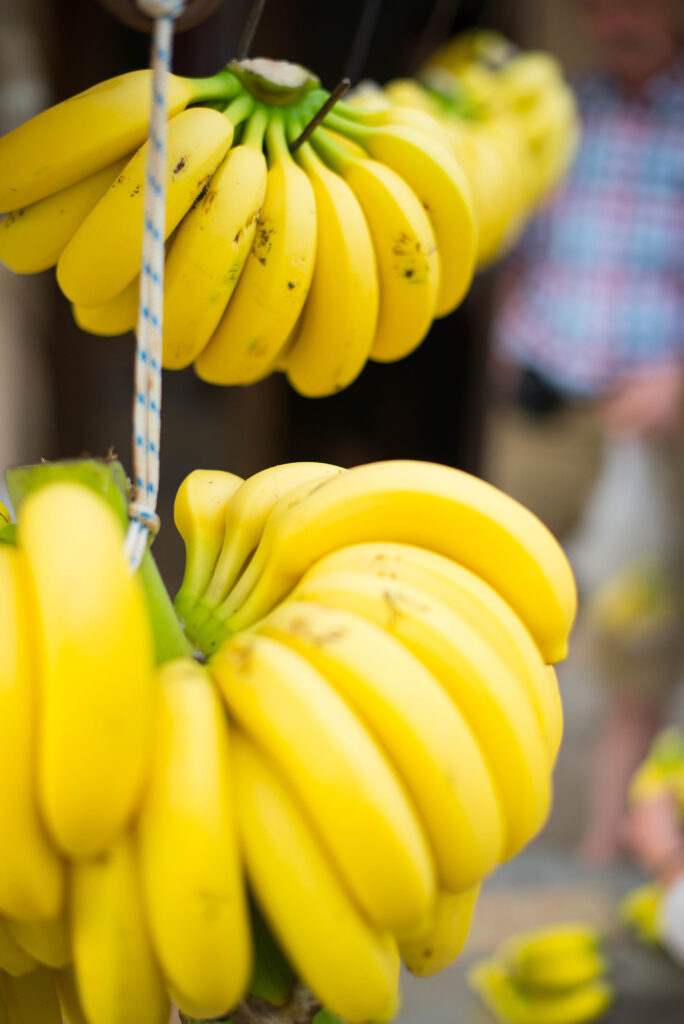
Cloning isn’t just for science fiction movies. Most commercial varieties of banana plants, including the plants that produce the Cavendish banana, are sterile and must be propagated via cloning. Their sterility results from purposeful hybridization between two seed-bearing wild banana species to create a palatable seedless variety.
Like most other edible varieties, the Cavendish banana is triploid, meaning it has three copies of each chromosome instead of the usual two found in wild bananas. Triploid plant species are typically sterile because the chromosomes can’t pair up properly during meiosis.
Since they lack seeds, these bananas must be asexually propagated. After the stalk of a plant has flowered and borne fruit, it dies. However, the side shoots (suckers) that grow from the underground rhizome are removed and replanted to produce genetically identical offspring. This means each banana is an exact clone of the one next to it.
Bananas without seeds certainly make for a smoother smoothie, but the lack of genetic diversity in these commercial crops leaves them susceptible to disease. Read on to discover how bananas almost disappeared from supermarket shelves and what threats they currently face.
Banana Apocalypse
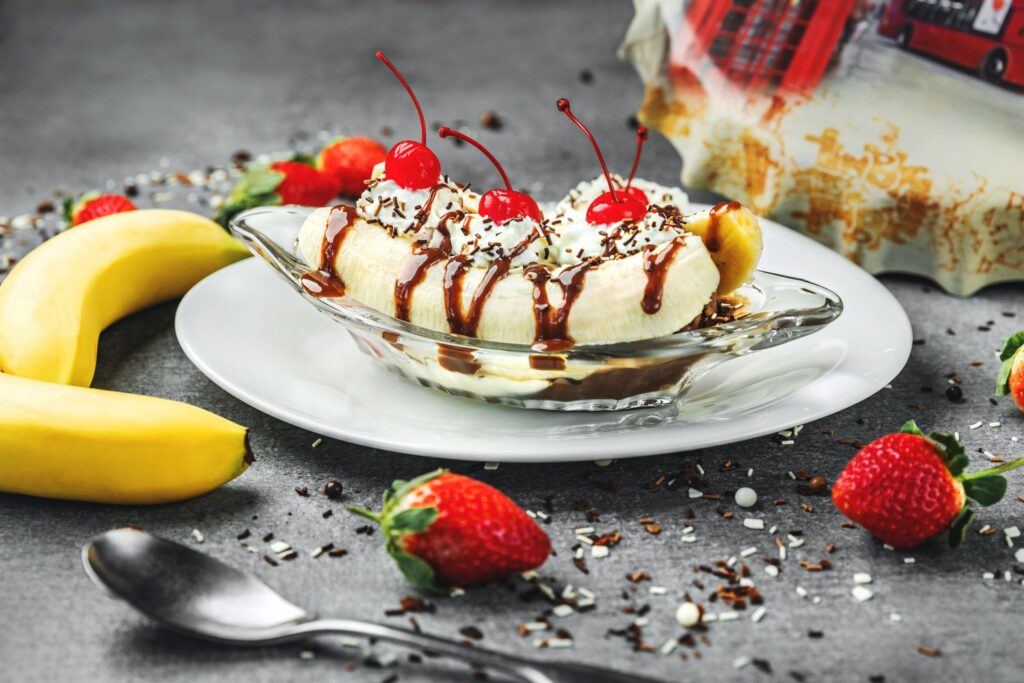
A banana split without a banana is just another sundae. Bananas are so ubiquitous in the U.S. diet that it’s hard to imagine life without them. But that was almost the case about 60 years ago, when a fungal disease nearly wiped out the world’s commercial banana crops. While the banana industry eventually recovered, a similar disease is threatening today’s banana plants.
Genetic uniformity makes bananas more vulnerable to infections, and a fungal disease called Fusarium oxysporum cubense (Foc), or Panama wilt, nearly decimated the entire banana industry in the late 1950s and early 1960s.
The top banana at that time was called Gros Michel, and it had a sweeter taste and creamier texture than today’s bananas. The fungus infected the roots and vascular system of the Gros Michel banana plants, clogging the tubes that transport food and water up to the leaves. Eventually, the plants wilted and died.
The Cavendish variety is more resistant to the Fusarium strain that destroyed the Gros Michel crops, but it is susceptible to other fungal diseases such as Black Sigatoka (Pseudocercospora fijiensis), which attacks the plants’ leaves and disrupts photosynthesis. In addition, a new strain of Panama wilt called Fusarium oxysporum f. sp. cubense or Tropical Race 4 (TR4) has appeared in Asia, and it is quickly spreading to other areas.
A world without banana bread or banana pudding seems unthinkable, and scientists are scouring the genomes of wild and domesticated bananas in search of disease-resistant genes that can be transferred to the cultivated bananas using classical breeding techniques or genetic engineering.
For more food-related science, check out this article about snacks.

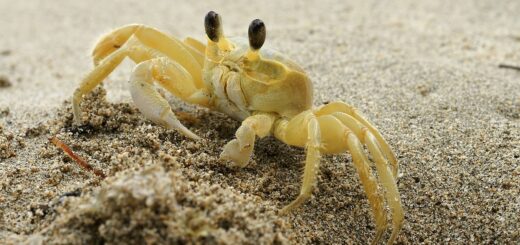

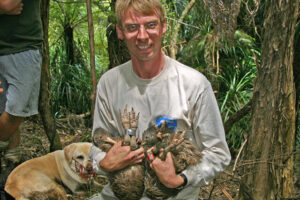
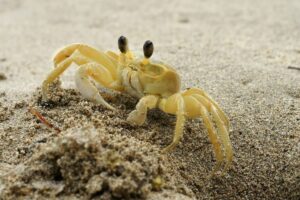

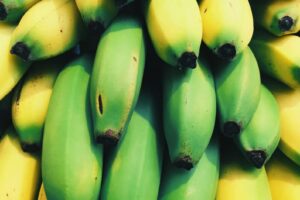
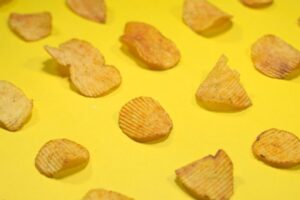
1 Response
[…] learn more about food science, check out this post about […]